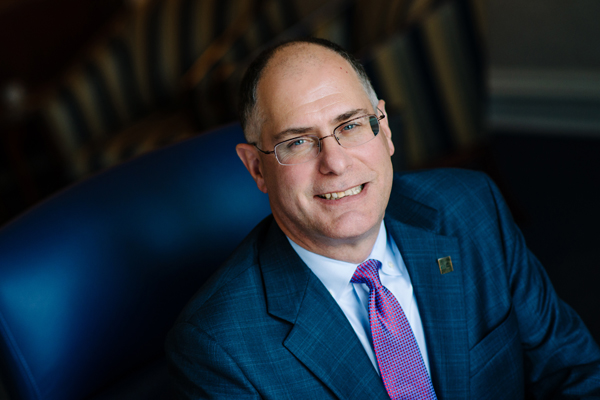News

President Spina: 'We will place the University's identity, values, educational mission, and care for the community at the center of every decision'
Over its 170 years, the University of Dayton has transformed and persevered. We were founded by four Marianist brothers in the middle of a cholera epidemic. We experienced the Great Dayton Flood of 1913 and the flu pandemic of 1918, two events that forced the campus, then known as Saint Mary’s College, to temporarily close. We’ve seen students and staff go to war, and weathered economic depressions and downturns with the Dayton community.
But now UD — like all colleges and universities — faces significant challenges created by the COVID-19 pandemic, stemming from uncertainty about how or when the pandemic will end, what plans must be put in place to bring students back to campus safely in the fall, and how our enrollment will be affected.
We have pledged to be transparent with our campus community, and that includes being open with the larger Dayton community. The pandemic has already upended this year's financial plans and our projections for next year, and is creating seismic changes throughout higher education as we navigate in an uncertain and unwelcome environment.
As all colleges and universities must do, UD is preparing a range of options for the fall semester, ranging from residential in-person learning to a hybrid approach to remote learning, and continues to discuss options with public health officials. While our strong preference is to resume residential education in the fall, we will abide by guidelines and protocols set by the state and local governments and public health officials to best ensure the health and safety of our campus community.
Like most colleges and universities, we receive revenue from tuition primarily at the start of each semester. The pandemic has already significantly impacted the University’s finances, including $15 million in housing and meal refunds and credits to students when we went to online learning after March 23. In moving to online learning and canceling on-campus events for the summer, we reduced tuition and will not receive any revenue from room and board, conferences or other typical summer activities.
Further compounding the picture for UD and for other colleges and universities, we do not yet know how the pandemic will affect fall enrollment or how much the financial aid needs of our students will increase. And there will be costs associated with the public health measures it will require to bring 14,000 students, faculty and staff back together to learn, live and work in the close quarters that are characteristic of our campus environment.
We cannot simply assume all of this will work out or that UD will come through these financial challenges without being proactive and taking difficult yet necessary steps. This week, we announced a number of actions to protect the financial health of the University. Those steps include reducing the University's payroll through approximately 450 furloughs this summer when there will be very few students on campus and 60 layoffs.
These recent actions are in addition to other steps the University took earlier this spring, including a hiring freeze, ceasing work and deferring nearly all capital projects, and halting all non-essential discretionary spending. In early April and through at least October, senior leaders took voluntary 20% pay reductions, and I have taken a 30% pay reduction.
We are sometimes asked how the University's endowment might help out. Portions of the endowment are restricted by donors and the board for specific purposes, primarily financial aid for students. The University does have unrestricted reserves, but since we don't yet know how revenue will be affected during the next academic year, we understand that these important reserves may be needed at that time to fund our fixed costs and keep the University in operation.
Many people in the Dayton community may wonder how this affects UD’s involvement in major redevelopment projects. We remain committed to the redevelopment of onMain, the former fairgrounds, along with Premier Health, but the timeline will be affected. Additionally, while the Arcade developers work toward completion of that project, the University is prepared to take occupancy and begin the 10-year lease for The Hub Powered by PNC Bank, although that may not be until later, in 2021.
We find ourselves in extraordinary times, trying to balance our duty to maintain the long-term strength of the University with our genuine care and concern for the current needs of faculty, staff and students. The decision to lay off and furlough employees is painful for the close-knit UD community. We are committed to bringing back as many employees as possible as the financial outlook becomes clearer.
The steps we are taking are necessary and will help to position the University to successfully weather this pandemic and ultimately thrive — no matter its duration or depth. We remain committed to serving our extraordinary students, continuing to conduct high-impact research, and engaging deeply with the greater Dayton community; it is these proactive and prudent steps that will best ensure these essential outcomes.
There will be more difficult decisions ahead, no doubt. As we move through these challenges, we will place the University's identity, values, educational mission, and care for the community at the center of every decision to ensure the University can continue to educate students and serve as an anchor in Dayton for another 170 years.
- Eric F. Spina, University of Dayton president
